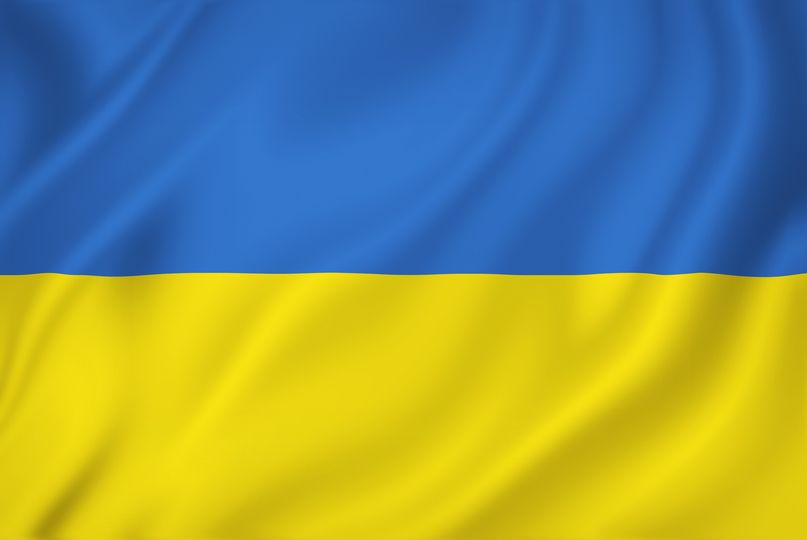Mechanics, energy and electricity (Roberval)
The UTC Roberval Laboratory promotes the development of innovative computational and experimental protocols and tools for reliable and robust analysis-based design, of mechanical engineering systems and structures.
Objectives
The Roberval Laboratory maintains its strategic objective to become a 'pole of excellence' (in the French HE incentives awards nomenclature) in the research, design and control assessment in mechanical engineering and sciences. In order to attain this objective, a systemic and multidisciplinary approach has been adopted, taking into account the physical, mechanical, thermal, acoustic and vibratory interactions between the subcomponents of the systems investigated.
The research work focuses on the development of experimental, theoretical and multidisciplinary mathematical modelling skills and know-how, to be implemented when designing materials, structures and mechanical systems. The laboratory aims at developing expertise in design methodologies and manufacturing protocols complying with environmental standards and constraints.
Research groups and themes
The research carried out by the Roberval laboratory is based on the fields of materials science, mechanics of solids and fluids, acoustics and vibrations, mechatronics, electrical engineering and systems engineering.
The unit is organized into 5 research teams:
- Numerical methods in mechanics,
- Acoustics and vibrations,
- Materials and surfaces,
- Mechatronics, energy, electricity, integration,
- Industrial systems: producst/process.
These 5 teams contribute to 2 transversal themes defined within the laboratory:
- Uncertainties and variabilities,
- Materials and structures with integrated functions.
Plateforms
The UTC Roberval laboratory is developing 7 platforms:
- Intensive calculations,
- Virtualized servers,
- Vibro-acoustics,
- Characteriszation of materials,
- Implementation of materials
- Mechatronics,
- Electric energy.
Joint laboratories
Created in 2019, the FuseMetal joint laboratory is the result of more than 20 years of collaboration between the Roberval laboratory and the company ArcelorMittal France (whose automotive research center is located in Montataire).
The Roberval laboratory is also involved with the company DeltaCAD in the joint laboratory DIMEXP (Digital Mockup for multi-EXPertises integration).
Partnerships
Projets d'investissement d'avenir (PIA)
- Institut de recherche technologique IRT RAILENIUM dédié au ferroviaire. Le laboratoire est principalement impliqué dans les thématiques matériaux et procédés, suivi de l'état des infrastructures ferroviaires et méthodes de prototypage virtuel et pré-certification par calcul.
- Laboratoire d'Excellence Labex MS2T (Maîtrise des systèmes de systèmes technologiques). Le laboratoire est impliqué dans les systèmes mécatroniques, la prise en compte des incertitudes ou encore l'optimisation multidisciplinaire des systèmes mécaniques.
- Équipement d'Excellence Équipex FIGURES, portant sur le développement d'une plateforme de recherche et de formations chirurgicales dédiées au visage. Le laboratoire est impliqué dans la caractérisation du comportement des matériaux du vivant.
- Projet ESSENCYELE sur la motorisation des véhicules propres dans le cadre du pôle MOV'EO et de l'ITE VEDECOM.
Competitveness clusters
The unit is particularly active in the global competitiveness clusters i-Trans, MOV'EO and SYSTEMATIC.
Industrial partners
- Automobile: RENAULT, PSA, SAINT-GOBAIN, ARCELOR-MITTAL, VALEO, PLASTIC OMNIUM
- Rail: ALSTOM, ARCELOR-MITTAL, Fraiveley Transport
- Aeronautics and space: SAFRAN, EADS, AIRBUS, CNES, ONERA
- Energy: EDF, CEA
- Defence: DGA
- Software editor: ESI Group
- Technical centers: Centre technique pour les industries mécaniques (CETIM), Centre d'études et d'expertise sur les risques, l'environnement, la mobilité et l'aménagement (CEREMA)
Academic partners
NPU Northwestern Polytechnical University de X'ian (groupe de recherche commun Virtual Prototyping for Design and Fabrication), École nationale des ingénieurs de Sfax, université de Santiago du Chili, École des Mines de Cracovie, université de technologie de Wroclaw, universités du Québec, université libre de Bruxelles, Imperial College of London, ISVR Southampton, TU Braunschweig…
Projects
The Roberval laboratory is developing projects in collaboration with other UTC laboratories and academic partners in France and abroad.
ANR projects
The DIMEXP labcom aims at facilitating the emergence of new references and design and industrialization standards for mechanical engineering products, through collaborative, multi-scale management of innovative digital mock-ups and by taking into account various heterogeneous data. DIMEXP was selected in the first call for 'labcom' projects by the ANR (national assessment agency for HE and research).
The objective of the ALVEO project is to develop systems for performing complex thee-dimensional micro-conveying tasks in a micro-factory context.
The RESEED project is part of the field of reverse engineering (or Reverse Engineering in English) and allies itself with the needs and particularities linked to heritage. Today, reverse engineering is widely used in the manufacturing industry to capture 3D product information.
The IPROD project aims to propose an integrated modular product / process design method, and to develop an integrated product / process configurator that allows different users to develop product variants, or customizable products.
FUI projects
The LUCID project deals with the issue of developing machining programs and associated strategies.
The objective of the ACCECOTP project (Improvement of the crash and impact behavior of thermoplastic composite equipment) is to obtain a mass gain of around 20% of aeronautical and railway equipment having dimensioning characteristics of crash resistance and / or shock.
European projects
SuPLight focuses on new industrial models to obtain sustainable solutions – with75% recycling of high quality (forged alloy) structural components. Relatively sophisticated optimization algorithms will be used for products and processes with an expected increase weight/performance of 50%.
Refresco aims at producing framework regulations to be applied new structural materials in railroad passer and freight transportation rail-carriages.
The HEXENOR project is developing noise abatement technologies for helicopter engine exhaust systems.
Investments for the Future incentives
The laboratory is investing in (and the University is strong committed to) 4 "Investments for the Future" incentives, as follows:
- materials and processes, the monitoring of rail infrastructures and direction of the programme "virtual prototyping and computation pre-certification" for the RAILENIUM IRT (Institute for technological research),
- mechatronic systems taking uncertainty factors and multi-disciplinary optimization of mechanical systems into account in the framework of the MS2T Labex programme 'Controlling systems of systems",
- mechanical properties of agro-sourced materials and modelling of plant/yeast metabolism functions in the framework of the ITE PIVERT,
- characterisation of material behaviour for living materials with the Equipex FIGURES.
The UTC-Roberval laboratory was also selected to work on the 'Investments for the Future' incentive programme with the calls to project launched via the ADEME (National Environment and Energy Agency), for example:
- Compofast (AMI covers Vehicle weight-saving, aerodynamics and architecture) consists of developing thermoplastic composites with continuous strutting strengtheners that contribute very significantly to cost control and manufacturing time-to-assembly for mass produced vehicles.
- CERVIFER (AMI covers railroad transportation) has the principal objective to increase the French railroad industrial efficiency level, using virtual prototyping software packages and development of robust, pre-certification test protocols, via a method of component and system computation in both rolling stock and in railroad infrastructures.
- BESTH (AAP-noise issues), in the framework of a hydraulic parallel hybrid transmission bus, to better understand the physics that can be observed in this problem area and to define design evolution for products and systems such that more silent transmission solutions can be identified and found acceptable by the new markets opening today.
Sorbonne universities cluster project
The HV-NanoRob project is aimed at designing and ordering a high speed nanorobot system that enable an operator to, generate rapid trajectories for a Local Probe Microscope (LPM). The system as proposed will differ from existing systems by its capacity to carry out high speed mapping in a constrained environment and for large surfaces.
Zoom on 2 projects
Contact and documentation
Contacts de la recherche à l'UTC



